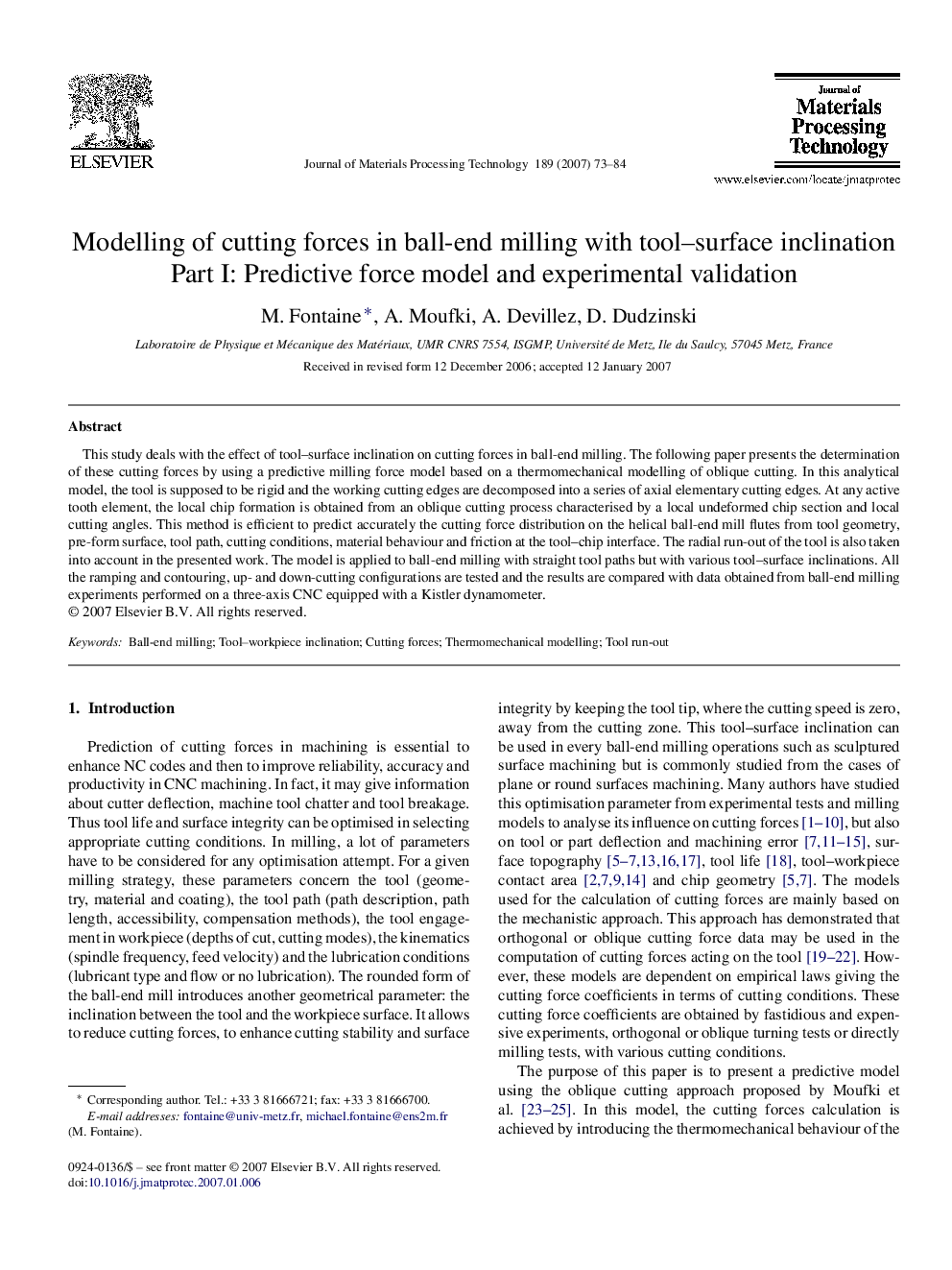| Article ID | Journal | Published Year | Pages | File Type |
|---|---|---|---|---|
| 795717 | Journal of Materials Processing Technology | 2007 | 12 Pages |
This study deals with the effect of tool–surface inclination on cutting forces in ball-end milling. The following paper presents the determination of these cutting forces by using a predictive milling force model based on a thermomechanical modelling of oblique cutting. In this analytical model, the tool is supposed to be rigid and the working cutting edges are decomposed into a series of axial elementary cutting edges. At any active tooth element, the local chip formation is obtained from an oblique cutting process characterised by a local undeformed chip section and local cutting angles. This method is efficient to predict accurately the cutting force distribution on the helical ball-end mill flutes from tool geometry, pre-form surface, tool path, cutting conditions, material behaviour and friction at the tool–chip interface. The radial run-out of the tool is also taken into account in the presented work. The model is applied to ball-end milling with straight tool paths but with various tool–surface inclinations. All the ramping and contouring, up- and down-cutting configurations are tested and the results are compared with data obtained from ball-end milling experiments performed on a three-axis CNC equipped with a Kistler dynamometer.
